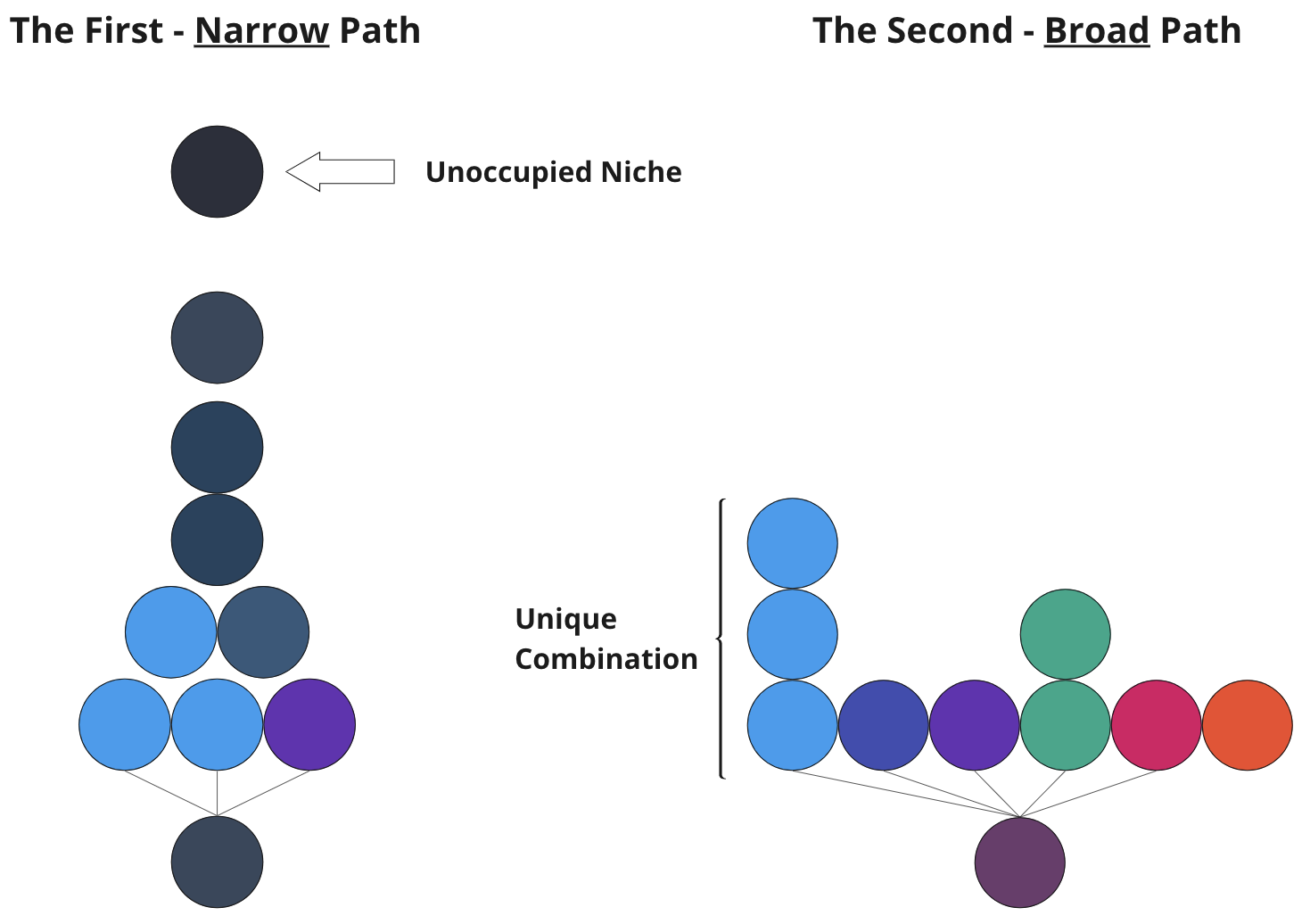Szymon's Zettelkasten
Powered by 🌱Roam GardenPN: Two paths of development
Keywords:: PermanentNote
Tags: makePublic career
Reference: R: Mastery by Robert Greene
Your past holds the truth about what your path in life should be. Recall ideas that inspired an unusual degree of curiosity. Actions that you could repeat without end. Activities that you really liked. These things are at the core of your being. They are notions that will inspire and energize you if you follow them. Based on them you should pick an area of interest for your adult life. From there you have two options for development.
The first is from your chosen field you look for side paths that particularly grab your interest. If possible choose a narrower field. You continue this process until you find a totally unoccupied niche in which you can flourish. This is a specialistic path. Usually, it works for introverted thinkers (check sources) and left-brain thinkers.
The second is, once you have mastered your first field, you look for other fields that you can conquer and connect to the first one. What you're looking for is synergy: 1+1 = 3. Each area or skill you connect exponentially expands your expertise. Ultimately this network becomes your own unique field you have created. This is a holistic path. Usually suited best for the extraverted thinkers and right-brain thinkers.
The first path is narrow; the second path is broad. The first one is about penetrating as deeply and accurately as possible; the second is about connecting and synthesizing. In today's world, the first is a specialistic path, usually, you embark on it when you choose to become an engineer, scientist, doctor, lawyer, analyst; the second is a holistic or generalistic path, usually, best suited for aspiring managers or businessmen.

Relevant notes/questions: